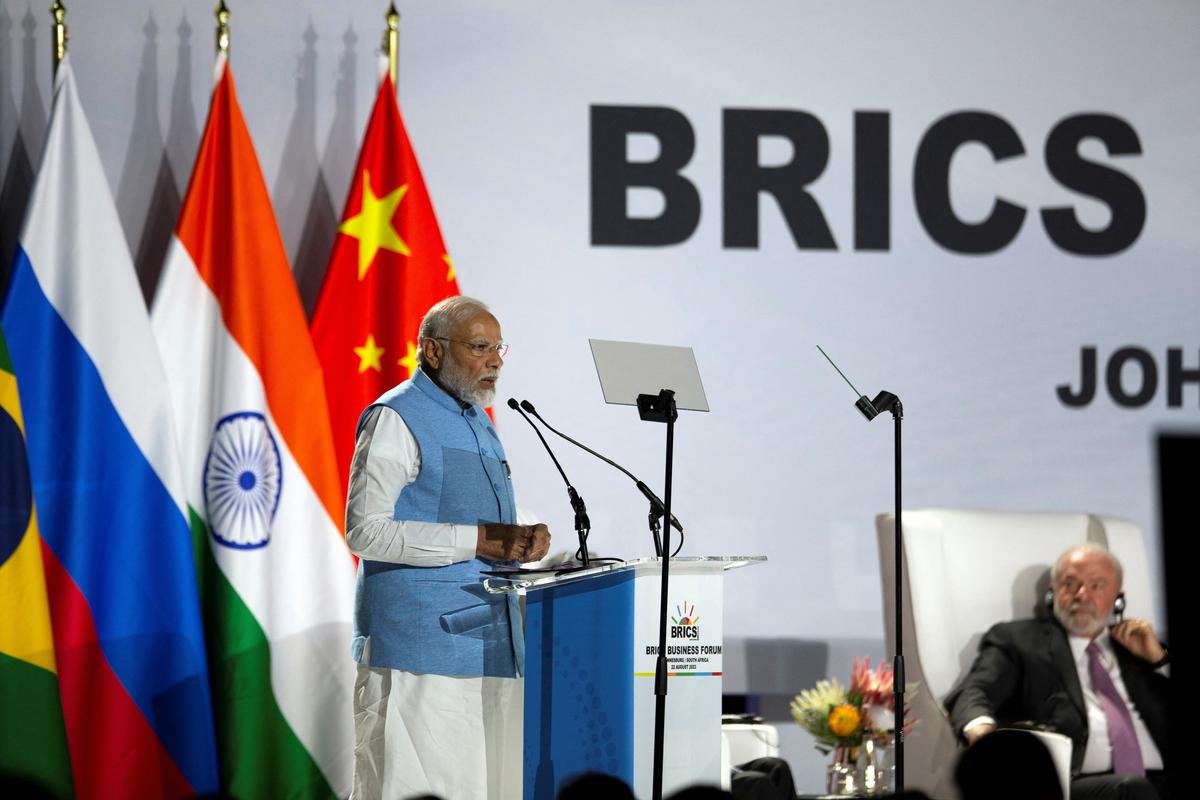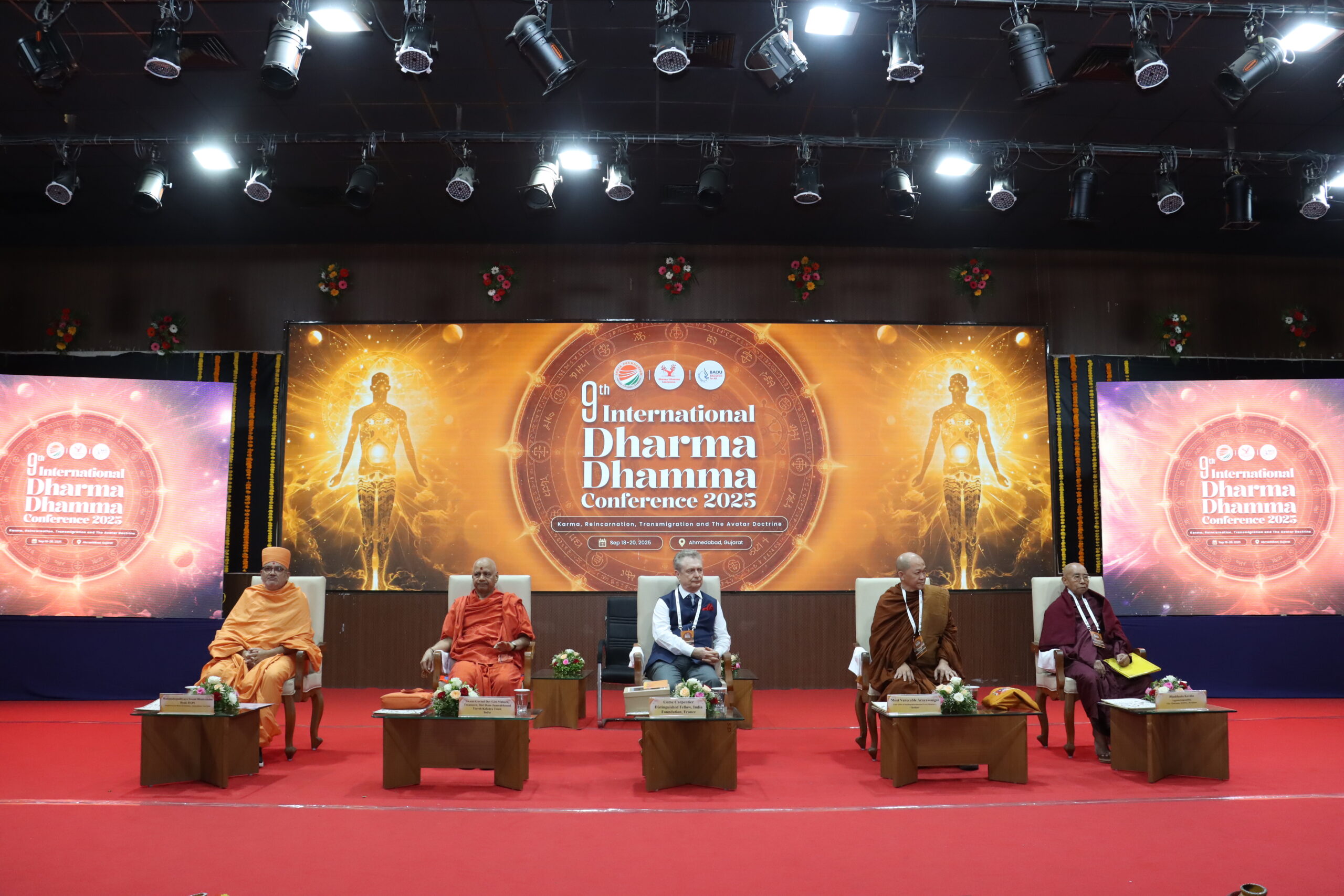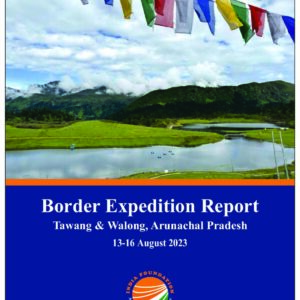Dedollarisation = Decolonisation = Deradicalisation = Demissionarisation
The World is moving out of the Single Country Reserve Currency format after centuries. Be it a new reserve currency representing a basket of all participant national currencies or trade in national currencies, the Dedollarization process is confirmed. This marks the end of the ills which the single country reserve currency format brought in this world with a lopsided unipolar international trade passing for globalization.
The process of radicalisation of the Indian subcontinent and the Middle East began with the birth of the petrodollar. There were hardly any Arabic black burkhas in the Indian subcontinent before that. There was no single community domination of the property market on both sides of highways across Indian cities before the fiat dollar of 1971 and the petrodollar of 1973.
Following are the notable evils of the Single Country Reserve Currency format in the last 50 years –
- Destruction of the correct Valuations of the physical assets, commodities and core sectors of manufacturing, farming, food processing, logistics, defense and precious metals.
- Destruction of Self-employment and Entrepreneurship model in all societies. Destruction of family as an institution by sponsoring waves of individualism, hyper consumerism, feminism and wokism across countries.
- Funding of protest and terror finance across the world straight from the printers of the central banks in the West.
- Funding of Sabotage and Religious conversion activities straight from the printers of the central banks in the West.
- Luring of talent from other sectors to the Information technology sector, which was born out of the Fiat dollar of 1971, by attracting them to outsourcing projects and very high pay scales while making them do ‘digital coolie’ tasks.
- Luring of talent to the West by offering them Fiat dollar- based high incomes.
- Playing the Diplomacy of ‘Two-Bucket theory’ by telling every economically healthy nation that your neighbor is a rogue nation deserving to be sanctioned, which means you have to continue with the US dollar for trade by default. Arms and dollars go to one nation while sanctions are handed over to its supposedly rogue neighbor. That explains Russia on the border of China, China on border of India, India on the border of Pakistan, Saudi Arabia – Iran, Iran-Israel and EU-Russia and other such ‘two buckets’?
- Almost none of the erstwhile English colonies have been able come out of the slave-churning degree-factories converting entire society into jobbers as part of the colonial agenda.
- All countries which cannot print their own currencies to purchase energy became financial colonies of the US in every sense of the word. All central banks look at the Federal Reserve while framing monetary and fiscal policies to ensure physical goods are sent to the West against lower and lower payments in return for a currency backed by nothing (Fiat money).
- While the West enjoyed distributing social benefits, income security, food stamps and whatnot by endless currency printing, the rest of the world has had to slog overtime to earn US dollars in order to buy any foreign commodities. The West simply printed the currency endlessly to consume far above its needs while floating paper assets in huge proportions in the market to take down the valuations of what the others export to them.
Instead of the physical asset valuing the derivative, the derivative paper assets are now setting the value of the real physical asset. With a large portion of the population turning to speculative trade and passively investing into others businesses, with the edge the dominating country’s reserve currency, the goods producing nations have ended up with a pittance as payments for their work. The West enjoyed weekends off, multiple vacations through the year, distributed money cheaply to businesses, leading to enormous tech-innovation, weaponised those IPRs and kept buying up the immigrant brains.
The dollar-loans international bodies continue to impose direct and indirect policy decisions to the subject nations to ensure they remain in the doomed loop of poverty and continuous dependence.
- The American lifestyle has been sponsored by the rest of the World since 1971 as Dollar-inflation was passed on to the rest of the World by transactions referenced in US currency.
- Sponsoring Start-ups and particularly e-commerce, directly funded by the central banks of the West at the lowest rates of interest to underlime entrepreneurship, offline trade by small and medium enterprises in all countries by selling products online much below the cost of the products. Not surprisingly, most of these online giant distributors have never been profitable.
The intent and pace of Dedollarization is speeding up with the topmost energy producing and energy consuming countries becoming BRICS members. The BRICS will expand with effect from January, 2024 with the addition of othe UAE, Saudi Arabia, Ethiopia, Argentina, Egypt and Iran across the continents. In all probability, the ‘two opposite bucket’ countries worldwide which have clashed and thereby kept the reserve currency status alive till now, are now joining hands. The ‘cats’ may still keep fighting each other, but they have agreed to first eliminate the monkey (US dollar) as their in-between.
The formation and trajectory of BRICS+ & the Global South needs to be on the following two common themes –
- Agreement to disagree –
This is to say no country will poke its nose into others’ internal affairs, no country will be bossing others, no country will have sanctioning privilege, no country will have to face any kind of political compulsions, no country will give any kind of lectures on human rights, no country can seize assets or curb multilateral participation of others and any country can freely exit the format, if they choose to.
- Agreement to Decolonise from the imposed Western templates of governance –
This is to say many of the BRICS nations will now revisit their understanding of history, scientific discoveries, performance indicators, indexes and ranking criteria from finance to trade to health to education to languages and all walks of life. The ‘natives’ will resurrect from the colonial conformism imposed through centuries of western domination.
The core theme & strength of BRICS of non-commonality is currently being portrayed by many experts as the reason for the futility of such a grouping. Only time will tell, if such truly democratic grouping can produce outcomes or not, compared to the contemporary unidirectional, standardised associations promoted and inspired by Western models. My view is that BRICS was formed exactly in order to escape from Western standardisation. Many of the ‘developing’ economies suffer from internal chaos and reduced valuations of their productivity because of dollarisation, invoicing and referencing their international trade in dollars.
What did Bharat offer to BRICS in the South Africa Summit 2023?
Prime Minister Narendra Modi made the most of Bharat’s stature by timing the Moon landing of Chandrayaan–3 to coincide with the BRICS Summit. The success of insertion on 5th August, 2023 was complimented by this.
After Subhashchandra Bose, Prime Minister Narendra Modi is perhaps the first Indian leader exercising full sovereignty in governance and decision making, internal as well as external. Many earlier Prime Ministers faced external compulsions when making decisions for various reasons including coalition politics. At the Africa Summit of BRICS – 2023, he offered the following objectives for the BRICS grouping.
- Unified payments interface
- BRICS Space Exploration Consortium
- To make BRICS future-ready, Bharatiya platforms like – DIKSHA, ATAL labs, BHASHINI, COWIN & India Stack
- Skill-mapping of BRICS nations’ capacities
- Repository of BRICS traditional medicine knowledge
- Cooperation in protecting of Big Cats in the BRICS nations
Following are the Dedollarization updates from the Johannesburg Declaration of the XV BRICS Summit – 2023
- We task our Finance Ministers and/or Central Bank Governors, as appropriate, to consider the issue of local currencies, payment instruments and platforms and report back to us by the next Summit.
- We stress the importance of encouraging the use of local currencies in international trade and financial transactions between BRICS as well as their trading partners. We also encourage strengthening correspondent banking networks between the BRICS countries and enabling settlements in the local currencies.
- We call for the need to make progress towards the achievement of a fair and market-oriented agricultural trading system.
- We agree to strengthen exchanges and cooperation in trade in services as established in the BRICS Framework for Cooperation on Trade in Services.
- We agree to enhance dialogue and cooperation on intellectual property rights through, the BRICS IPR cooperation mechanism (IPRCM).
- We look forward to the report by the BRICS Payment Task Force (BPTF) on the mapping of the various elements of the G20 Roadmap on Cross-border Payments in BRICS countries.
- We have also tasked our Foreign Ministers to further develop the BRICS partner country model and a list of prospective partner countries and report by the next Summit.
- The African Continental Free Trade Agreement (AfCFTA) and BRICS cooperation present opportunities for the continent to transition away from its historic role as a commodity exporter towards higher productivity value addition.
The above pointers make it very clear that the new applications and memberships are going to substantially increase next year. The oversubscription of South African bonds issued by the New Development Bank on 15th August, 2023, the forthcoming issue of Indian Rupee bond in October and the designation of a technical committee to discuss the feasibility of a common currency, all point at replacing the US treasury in its global regulatory role as well as raising loans in local currencies. In the coming months, we could see a massive dumping of US treasury by several nations including China and Japan.
No countries need to join BRICS for doing trade in national currencies like Yuan, Rupee or Ruble; so why are countries applying for membership if a common format is not in the plan?
Large nations like China, Russia and India do not need assistance for dedollarising their bilateral trade, but smaller nations need an established framework to shift their trade out of US dollars as in kind of blanket security. They have seen the fate of leaders like Saddam Hussain and Gaddafi after they went solo in their Dedollarisation endeavours.
The Rupee has some of a reserve currency features, but does not carry enough trade to become a trading currency. THe Yuan has many trading currency features, but does not have the trust and transparency factor to become a Reserve currency). The Ruble has none of two, neither trading nor Reserve currency features, but has massive natural resources to be pegged to for valuations. It is very clear that none of the three – Russia, India and China can bring about a unipolar Reserve currency. All the three nations must compromise to arrive at a multipolar BRICS format of trade.
While the invoicing and payments can be easily transitioned outside the US Dollar or Euro currency, the referencing for putting a price tag for the valuation of products or services is the difficult part. One of the easiest ways to do so could be making Gold the reference point for valuations to move trade. For example, a particular weight of Gold value can be fixed for say, one barrel of crude oil. Gradually the price resetting can be done for each of the commodities and production traded among nations. This will require revamping the commodities and stock exchanges and banking systems as well. The GIFT city of Gujarat which hosts the New Development Bank regional office for BRICS can be offered as a mini–World Bank, a nodal agency handling the transactions. Each country can maintain its national currencies for internal trade and shift its foreign trade to BRICS digital tokens issued by the New Development Bank. The issue of BRICS digital tokens can be based on a net gap adjustment of international trade for each member country, with periodic settlements on Gold value terms. There will be a need for a new trans-national, secured Payments system to operationalise and carry out these transactions.
Bharat’s immediate Sphere of Influence –
Under the BRICS Partner-Country model, Bharat should cover memberships of the Greater Indian subcontinent to include Bhutan, Nepal, Sri Lanka, Maldives, Myanmar and Bangladesh. The regional trade of Bharat can grow under the BRICS format in the regional neighbourhood. This is necessary to keep out the imposition of political conditions and external interferences mandated indirectly by the debt-issuing international bodies such as the IMF and the World Bank.
What else can Bharat offer to BRICS?
- Skills-based Curriculum sharing
- BRICS Media
- BRICS Defence Capex Sharing as Net Security Provider across the greater Indian Subcontinent
- Mandir Ecosystem for establishing a Sanatan Economics Model (Sustainable Economics) with seamless connectivity, possibly from Ayodhya as a central node across the greater Indian Subcontinent
When information outlets are non-nationalist and the historical curriculum is not based on Shaashtra (spiritual knowledge) principles, a country needs shashtra (military weapons (for internal security.
Shaashtra is for Internal security & Shashtra is for External security. Bharat has the potential to offer both.
Author Brief Bio: Dr. Ankit Shah is a Fellow Chartered Accountant & a Qualified Company Secretary, Independent Fin-Tech Consultant for MNCs including on Semi-conductors, Advisory Board Member with GNLU Legal Incubation Council and a keen observer of foreign policy & security for the Indian subcontinent. He introduces the Super power concept as a Two Buckets Theory in his book – GEOPOLITICS – DECODING INTENTS, LIES, NARRATIVES AND FUTURE. He has served IIM-Ahmedabad as an Academic Associate in the Finance & Accounting Area and as a Research Associate with the IIMA Case Center.




